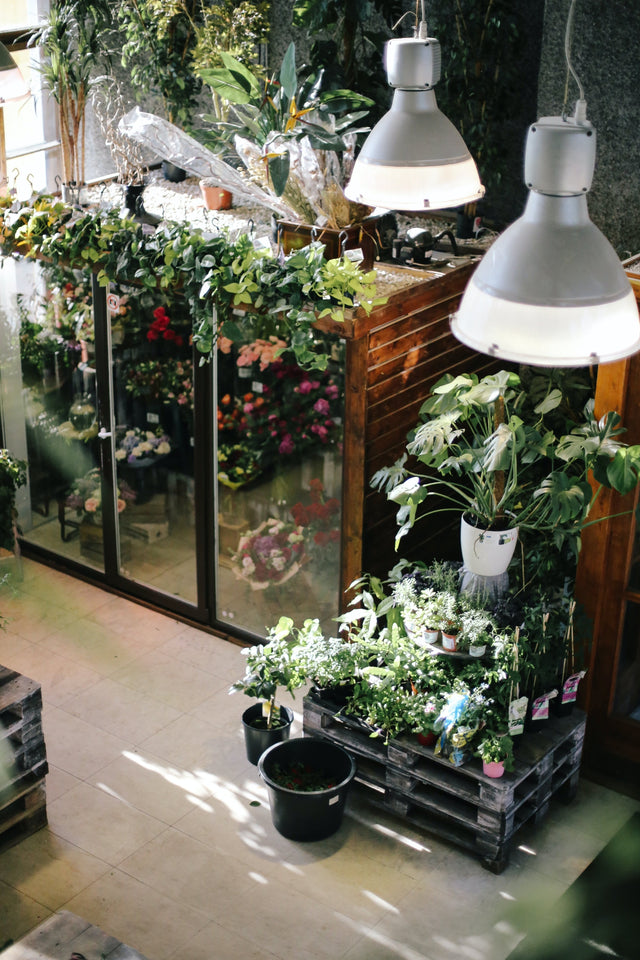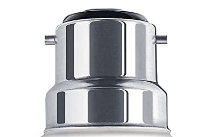
Types of water
Providing the right type of water for your indoor plants can be important for their growth and overall health. Here are a few options to consider when watering your houseplants:
- Rainwater: Collecting rainwater is a natural and cost-effective option for watering your plants. It's free of chlorine and other chemicals that can be harmful to your plants.
- Tap Water: If you're using tap water, let it sit overnight so that the chlorine and other chemicals have time to evaporate before using it on your plants.
- Distilled Water: Distilled water is free of minerals, so it's a great option for plants that are sensitive to mineral build-up, or even filtering water with a normal household water filter can be really helpful.
A common question among plant owners is whether tap water is okay to use for your plants. The short answer is it depends. Whilst most tap water is safe for your indoor plants, there are a few things to consider.
Tap water that is softened can contain salts that can accumulate in the soil over time, potentially causing issues for your plants.
As well, Chlorine is a common addition to tap water, and it's generally safe for your indoor plants. If you have a filtration system, though, it removes chlorine and other contaminants, creating an even cleaner and healthier environment for your plants to thrive.
Watering Plants: Don’t Drown them or Leave Them Thirsty - Finding the Goldilocks Amount
Watering your plants correctly is a must-do in your plant care routine. Too much water can harm the roots and cause root rot, while not enough can lead to wilting and eventually the death of your beloved plants. In our Indoor Plant Appendix we have included the ideal water requirements for the most popular indoor plants.
Every plant has its own unique water requirements, and the factors like the type of plant, pot size, weather, and soil type can play a role in determining how much water your plants need.
For example, plants from dry regions like succulents and cacti require far less water compared to plants from moist environments like ferns. Hence, it's important to research the specific water needs of each of your plants. The size of the pot can also play a role in determining the amount of water needed - plants in larger pots require more water as there's more soil for the water to penetrate.
The weather conditions can also significantly impact your plants' water needs. On hot and sunny days, plants lose more moisture through transpiration and require more water, while during cool and cloudy weather, they need less.
Additionally, the soil type is another important factor to consider. Soils that drain well, such as a mixture of sand, perlite, and peat, require more frequent watering compared to soils that retain water like heavy clay soil. To determine if your plants need water, you can check the soil moisture by performing the finger test and inserting your finger about an inch deep into the soil. If the soil feels dry, it's time to water, but if it's still moist, wait a few more days before checking again. When watering, make sure to water deeply to reach the roots.
Different ways to water house plants
Indoor plants bring life and greenery to your home but keeping them healthy and thriving requires proper watering techniques. From the classic watering can to the latest technological advancements, there are many ways to give your plants the hydration they need. Here are a few methods to try:
- Traditional watering can: This classic method is perfect for small plants, as it allows you to control the amount of water you’re dispensing. Make sure to water the soil and not the leaves, as this can cause fungal growth and leaf damage. One important tip is to water from below, as this helps to reach the roots and avoid any splashing on the leaves. Some plants are particularly sensitive to water on their leaves, and can even suffer from scorching, so be sure to avoid this when watering your plants.
- Self-watering pots: These pots come with a built-in water reservoir that keeps the soil moist for longer periods. This is a great option for those who are forgetful about watering or for those who want to be away for a few days without worrying about their plants.
- Mist spray: This method is perfect for plants that require high humidity, like ferns or orchids. Simply mist the leaves and soil to provide the extra hydration they need.
- Watering spikes: These are a great tool to use when you go on holiday and aren't able to water your plants for a while. Watering spikes are inserted into the soil and connected to a water bottle or reservoir. They slowly release water directly to the plant's roots, ensuring a consistent supply of moisture.

How to Tell If You're Overwatering Your House Plants
Overwatering is a common problem among plant enthusiasts, but it can lead to root rot and other harmful issues. The good news is that there are several signs to look out for that will help you determine if you're overwatering your plants.
- Yellowing leaves: If you notice the leaves on your plants turning yellow, this could be a sign that you're giving them too much water. Yellow leaves indicate that the plant is not getting enough oxygen, which is often a result of overwatering.
- Wilting: While it may seem counterintuitive, plants can actually wilt from too much water. When the soil is constantly moist, it can prevent the roots from getting the oxygen they need, causing the plant to wilt.
- Mould or mildew: Overwatered plants are often susceptible to mould and mildew growth, particularly on the soil surface. This can be a clear sign that you're giving your plants too much water.
- Root rot: If you notice a foul odour coming from your plant or the roots appear brown and mushy, this could be a sign of root rot, which is often caused by overwatering. For more on root rot, heres a recommended guide
- Stunted growth: If your plants are not growing at their normal rate, this could be a sign of overwatering. Overwatered plants often lack the necessary nutrients and oxygen to grow properly.
If you think you've been overwatering your plants, it's important to start by reducing the frequency of watering and allow the soil to dry out more between waterings. You can also consider adding a well-draining soil mix to improve soil structure and prevent root rot.
Tip: The Finger Test 👈
To ensure you're not overwatering your plants, especially when using the traditional watering can method, try the finger test. Insert your finger about an inch deep into the soil. If the soil feels dry at that depth, it's time to water your plant. If it's still moist, wait a few more days and test again. This simple technique helps you avoid overwatering and ensures your plants receive the right amount of moisture.
Find similar articles:
Plant CareMore stories

Grow Light Terminology and Measuring for Optimal Lighting
